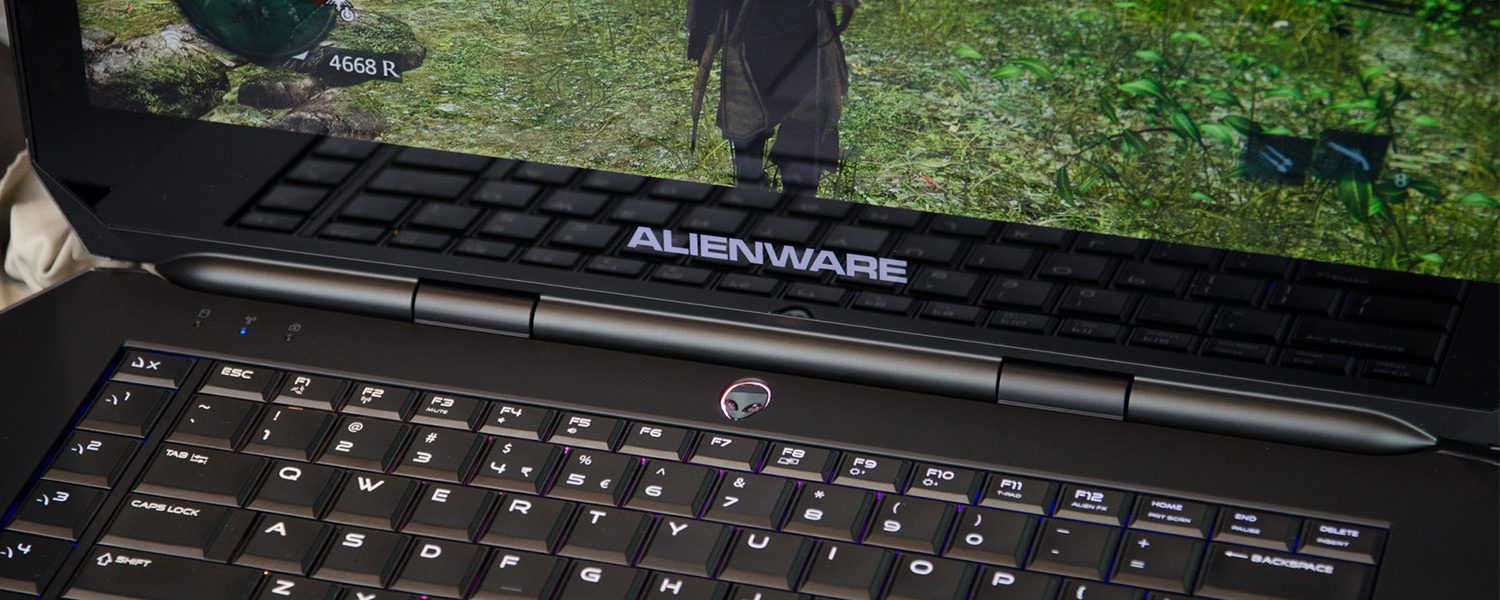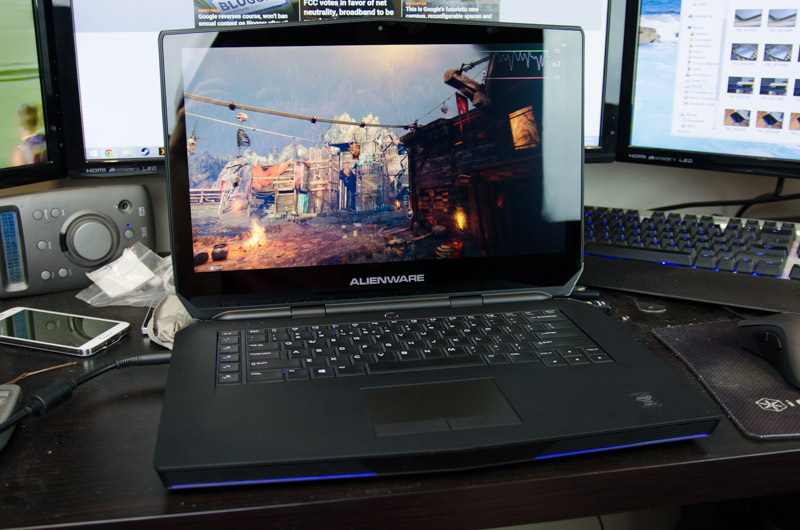Hardware Overview and CPU Performance
The Alienware 15 I was sent to review is loaded with powerful hardware. The CPU is Intel's Core i7-4710HQ, a quad-core, eight-thread 47W SKU clocked at 2.5 GHz with a Turbo Boost frequency of 3.5 GHz. This particular CPU is from Intel's 22nm Haswell line, as high-performance Broadwell parts haven't been released at this stage. It's the same CPU we saw on many of last year's high-end gaming laptops as well.
On the graphics side, we're looking at Nvidia's GeForce GTX 980M, the fastest mobile GPU going around. This GPU is based on the same 28nm Maxwell GM204 core as the desktop-class GTX 980 and GTX 970, with 5.2 billion transistors. However, it's not as well-spec'd as either of these desktop GPUs: the 980M comes with 1536 CUDA cores, 96 texture units and 64 ROPs, and a base clock of 1038 MHz that can boost up to 1127 MHz.
The 980M also comes with 4 GB of 5,012 MHz GDDR5 memory on a 256-bit bus for 160 GB/s of bandwidth, which is 29% slower than the GTX 980. Judging by these specifications, I'm expecting performance slightly below the desktop-class GTX 970, which is pretty impressive for a mobile GPU constrained by heat and power.
Nvidia hasn't detailed the TDP for this mobile GPU, though the GTX 970's 145W TDP gives us some idea of how much power this highly efficient Maxwell chip is consuming. The power brick for the Alienware 15 is rated at 180W, so subtract the 47W CPU and you're left with around 130W for the GPU and other system components.
Other components include 16 GB of dual-channel DDR3L-1600 RAM, a 512 GB M.2 SSD for boot, a 1 TB 5,400 RPM hard drive for storage (both drives in my system were from Toshiba), and Killer 1525 networking that includes Wi-Fi 802.11a/b/g/n/ac and Bluetooth 4.1.
I should mention again that I received the top-spec Alienware 15 to review. The base model includes a dual-core Core i5-4210H CPU (2.9 GHz base with Turbo up to 3.5 GHz), a GeForce GTX 965M GPU with 2 GB of VRAM, 8 GB of memory, and a 1 TB hard drive. On specs alone this model should be roughly half as powerful, though I didn't get a chance to benchmark it.
While the CPU upgrades straight to the i7-4710HQ in pricier models, there are two other GPU options: the GeForce GTX 970M, and AMD's Radeon R9 M295X, which are progressively faster and more expensive. Storage options will add in and upgrade the SSD only, with 128 GB, 256 GB and 512 GB options available; the 1 TB HDD is included with every model. RAM options are either 8 GB or 16 GB.
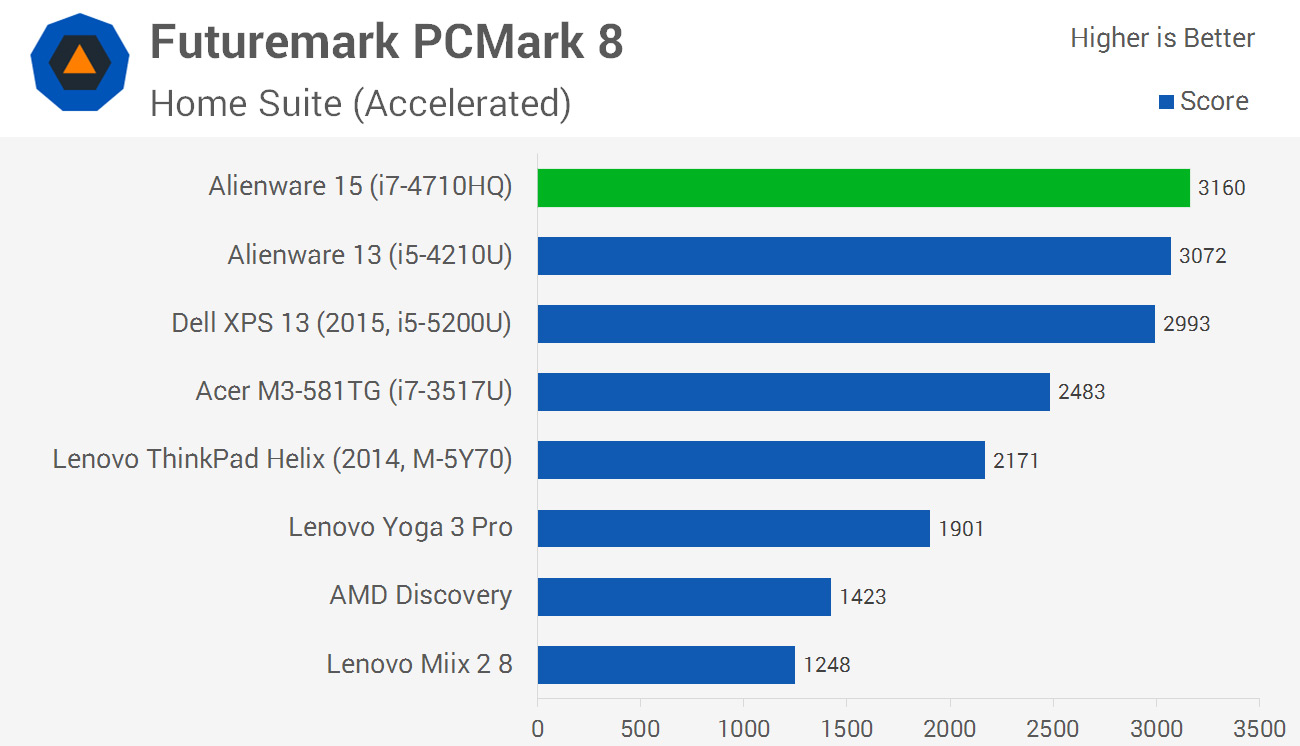
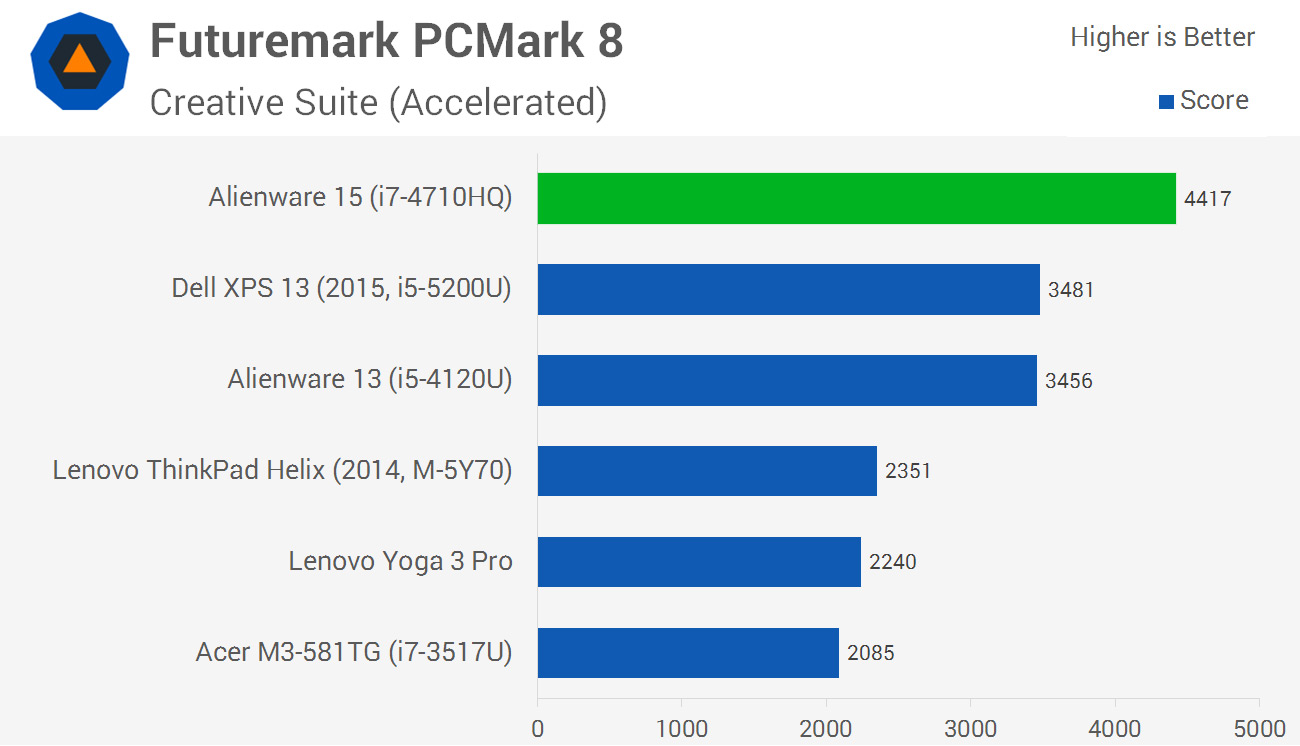
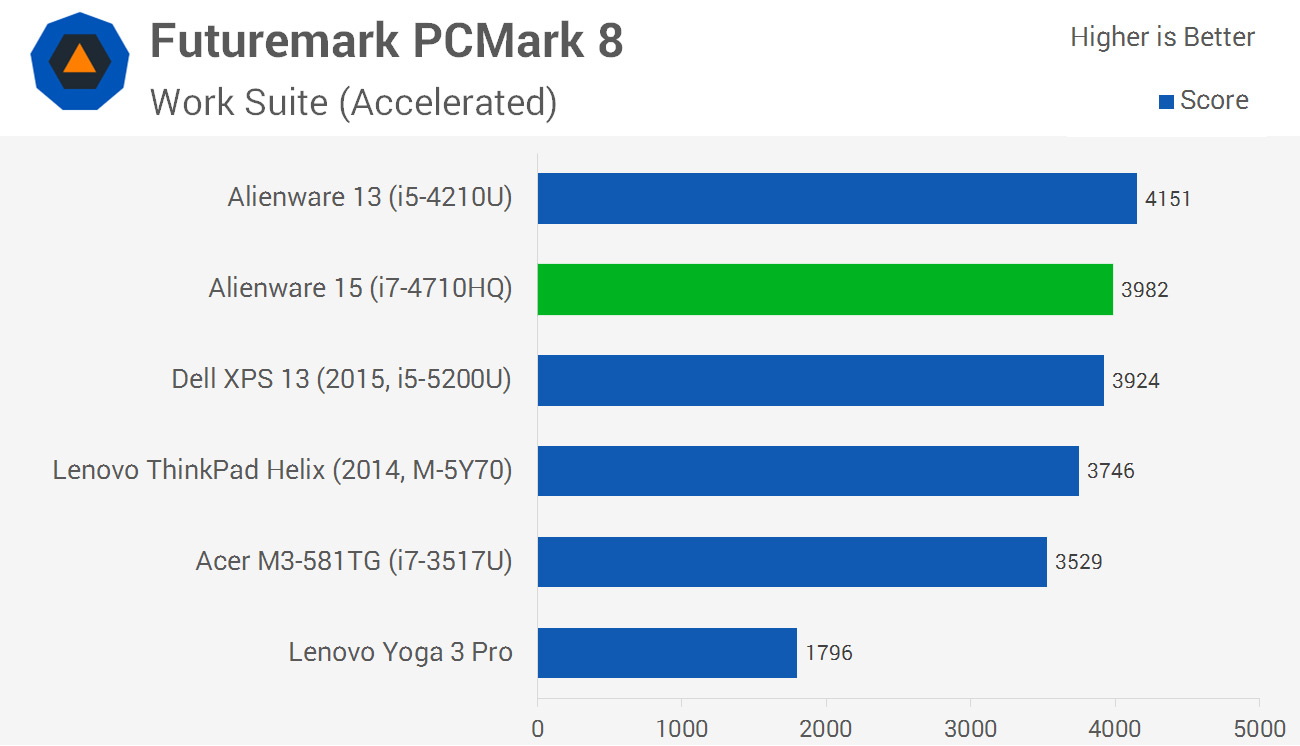
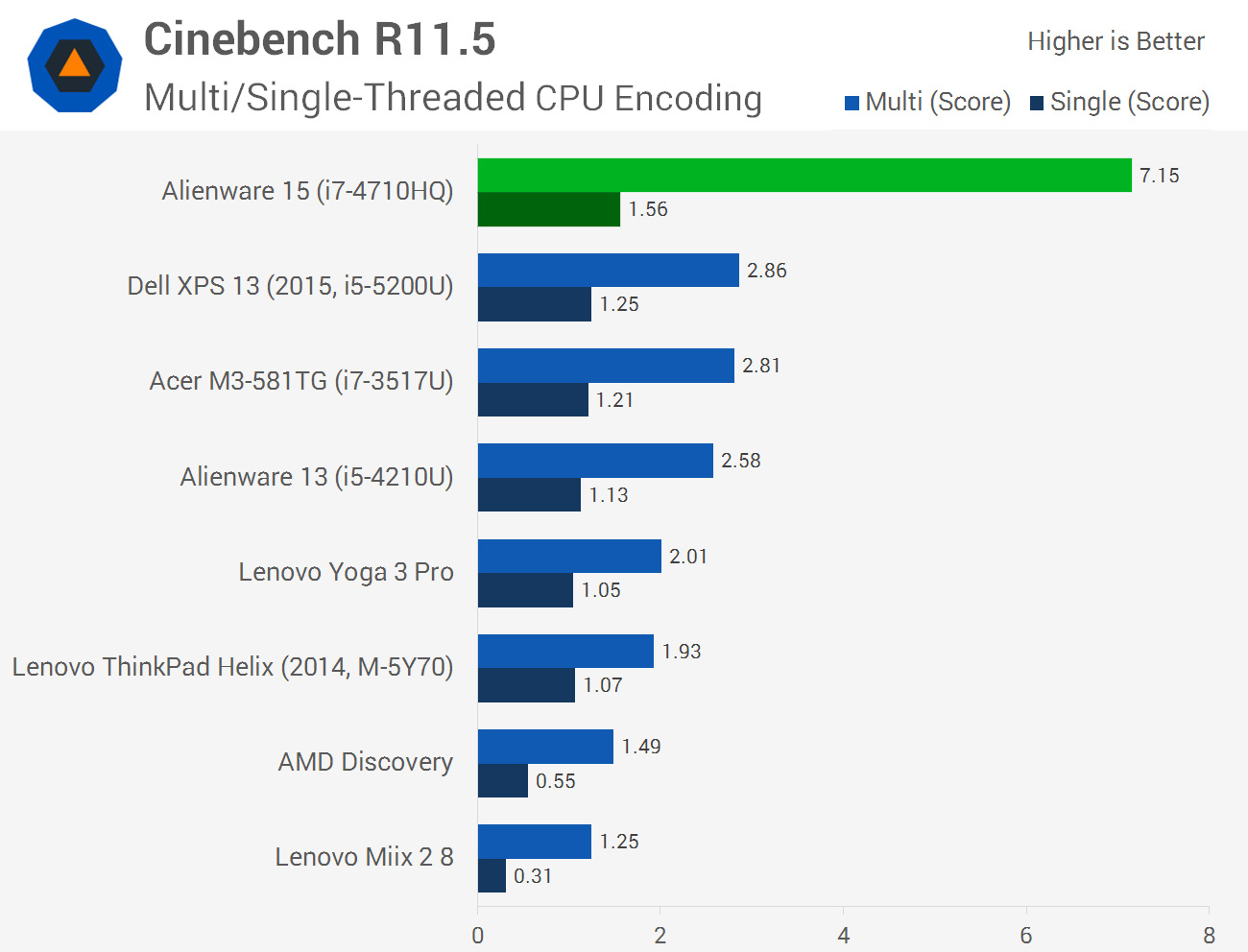
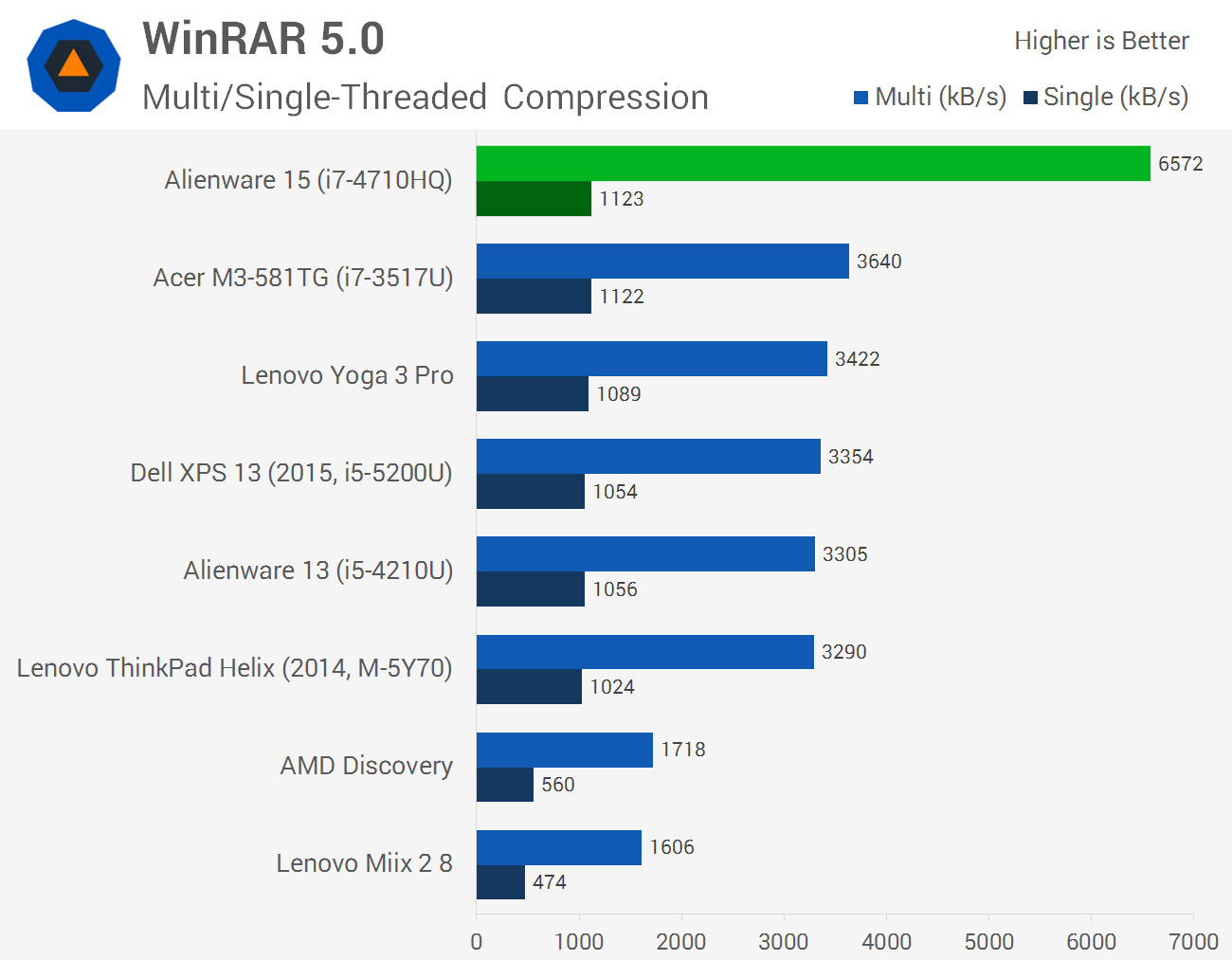
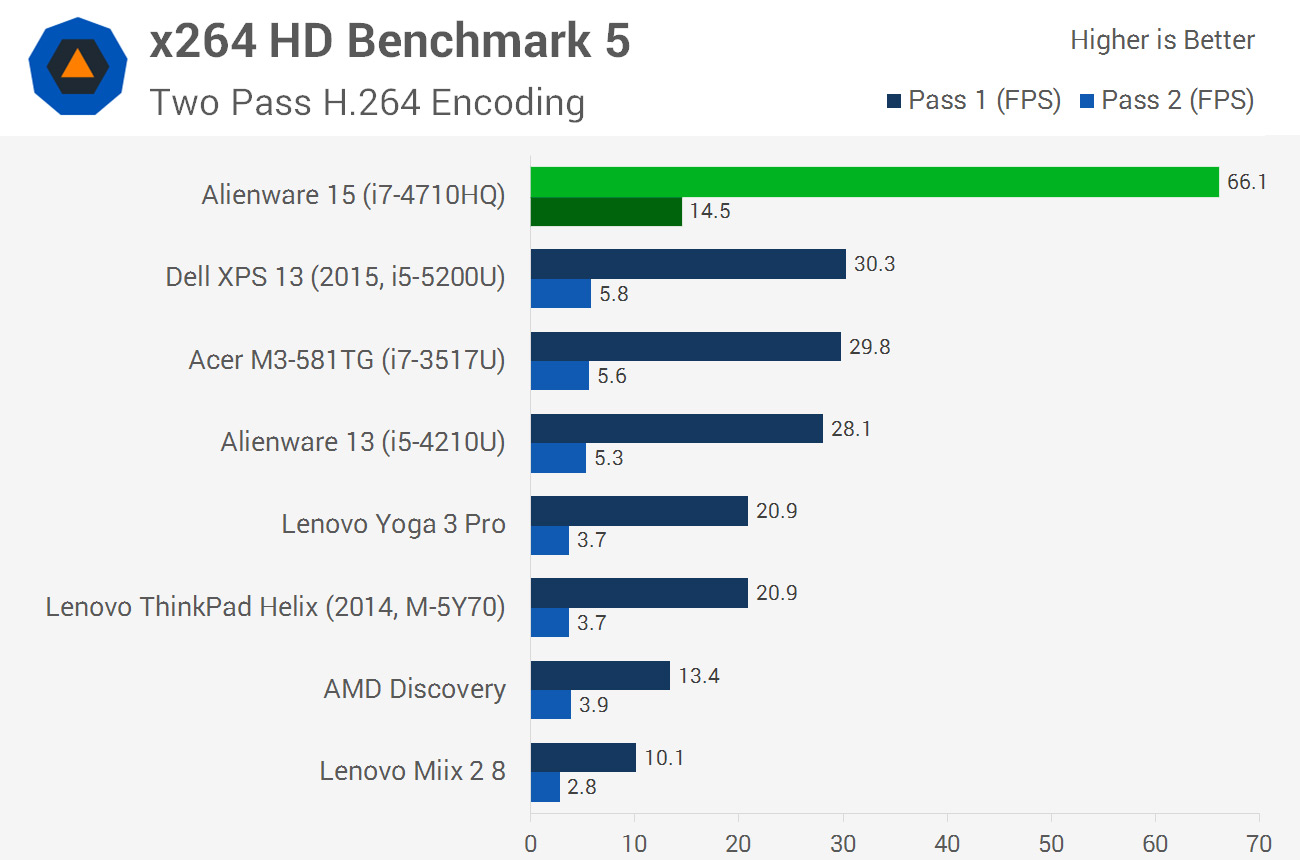
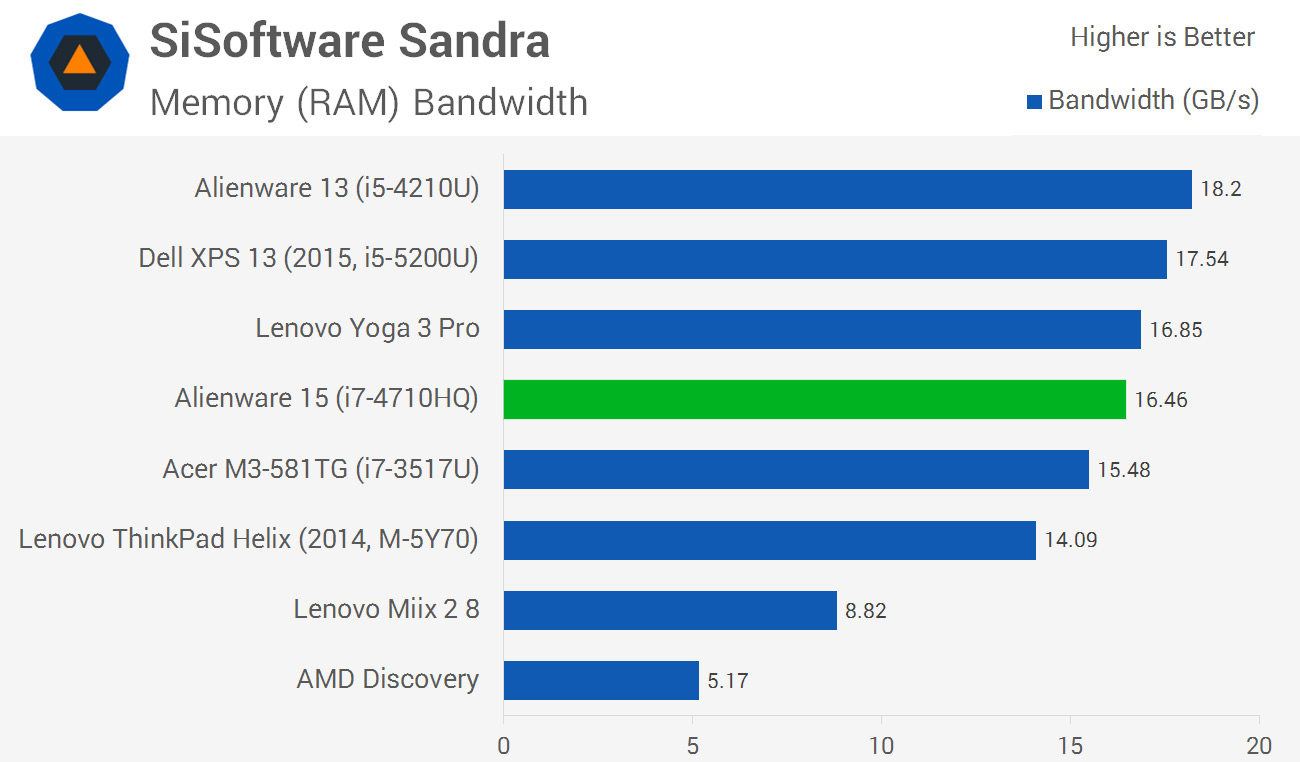
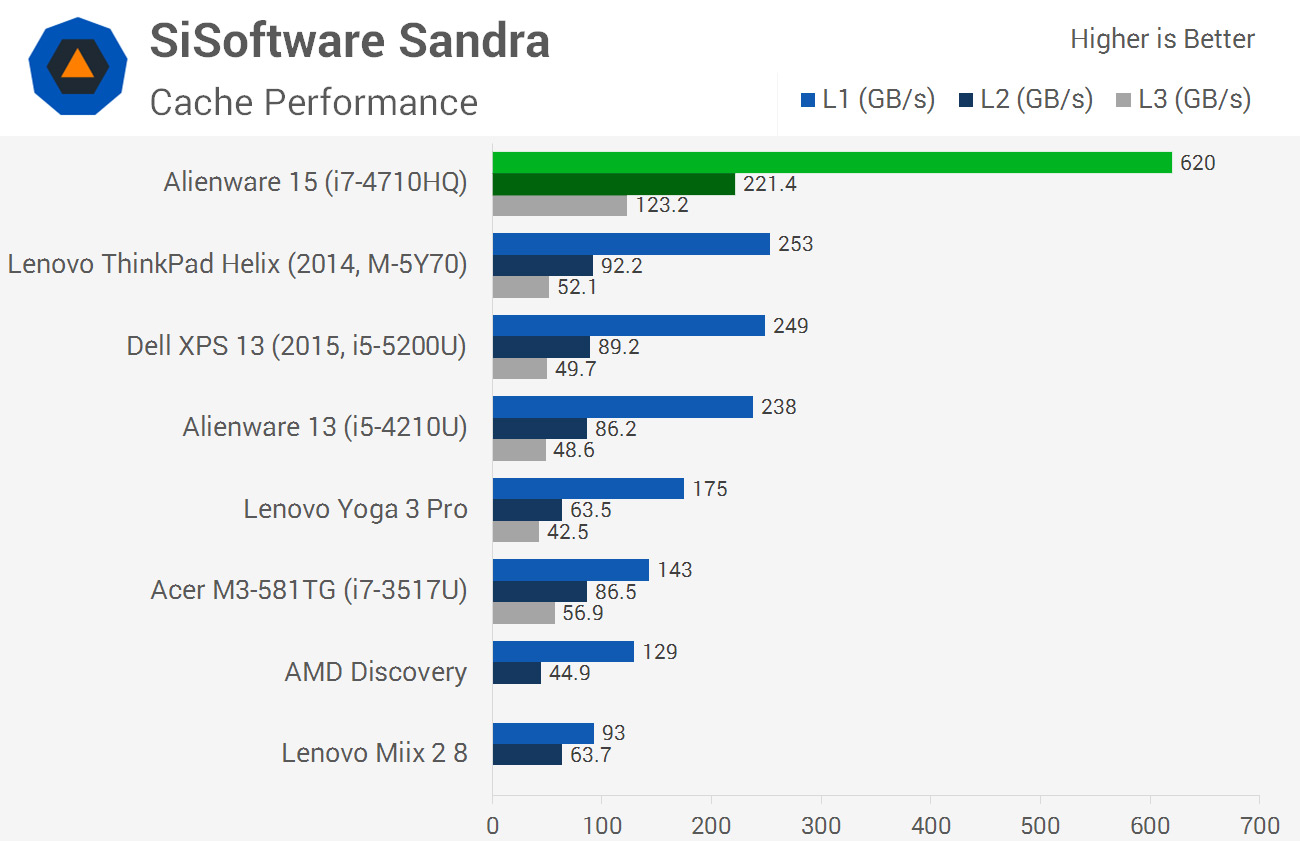
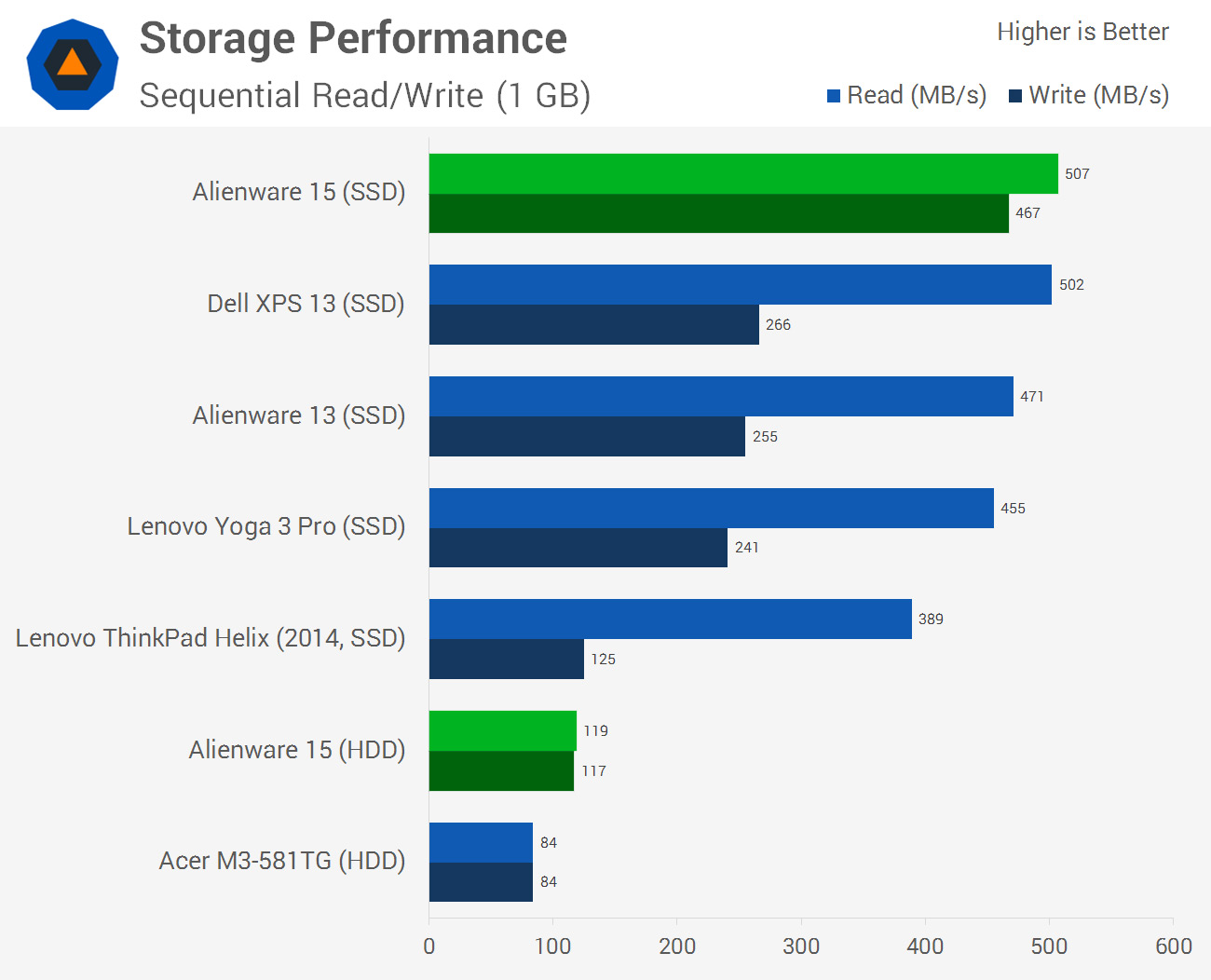
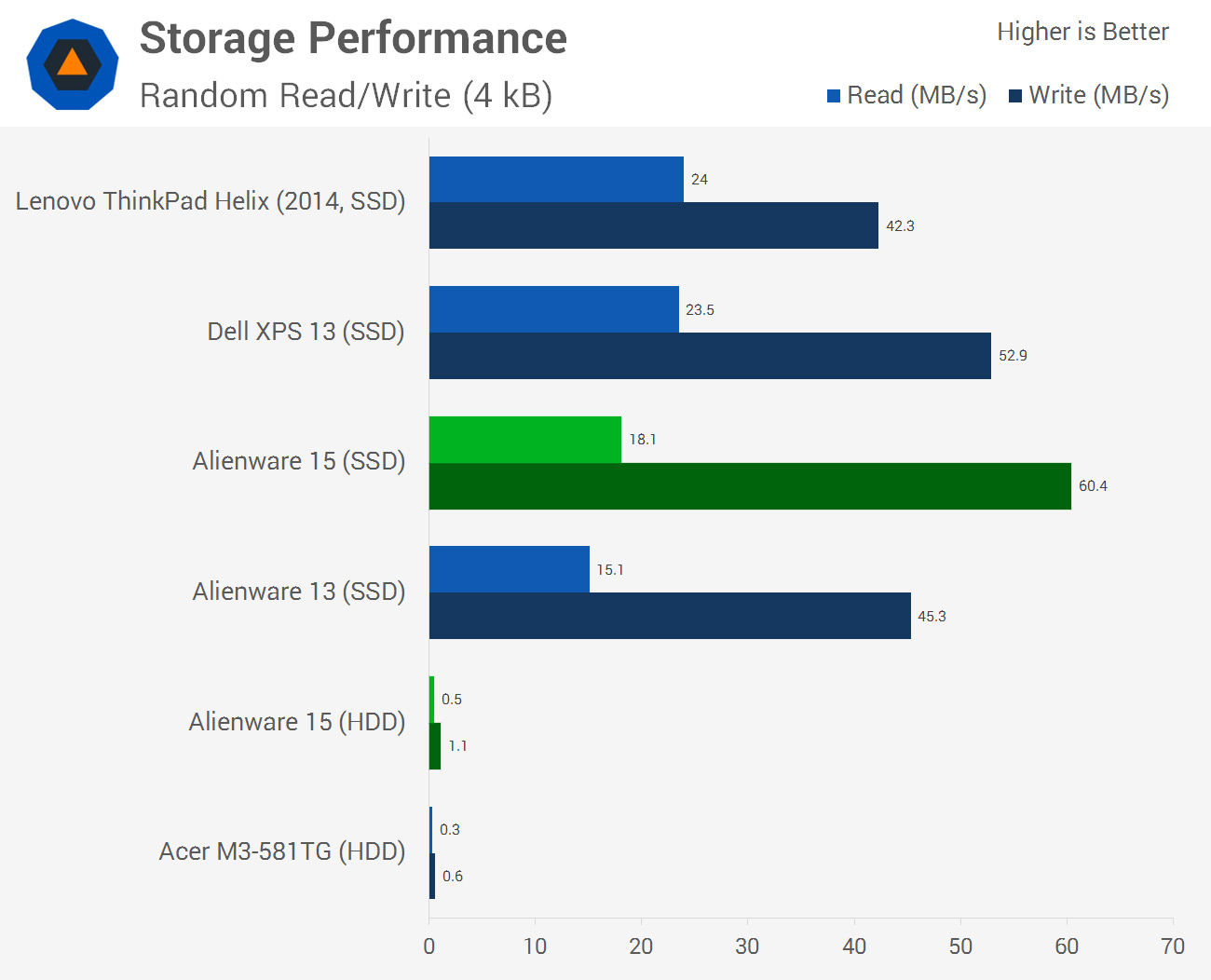
As the CPU found in the Alienware 15 is the same as the CPU in other gaming laptops we've reviewed, and provides nearly identical performance, for this round of benchmarking I decided to instead compare the performance of this system to mainstream laptops.
While the more powerful CPU doesn't improve system performance hugely in mainstream tasks such as web browsing and document editing, as illustrated in PCMark results, there is a significant improvement in other areas. In Cinebench and x264 video encoding, for example, the increase in CPU cores and overall raw CPU power greatly improves performance in rendering tasks. The Alienware 15 is more than twice as fast as the Broadwell-based Dell XPS 13 in these benchmarks.
The increase in cores also helps performance significantly in compression, and we're seeing slight improvements in single core performance between the i7-4710HQ and the i5-5200U. Needless to say, if you want to render 3D objects, edit extremely high resolution photos, or create videos, you'll require the CPU performance of the Alienware 15.
